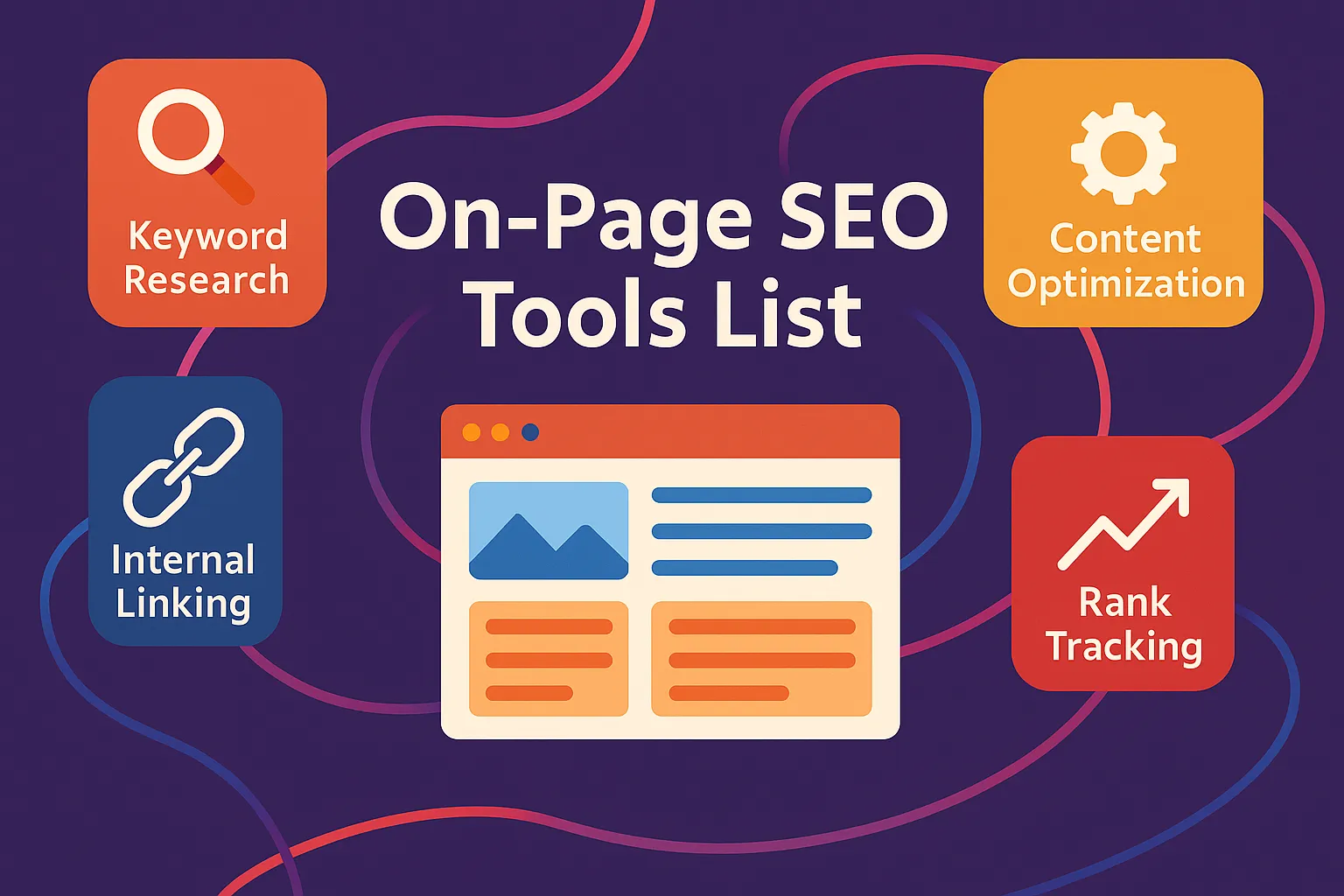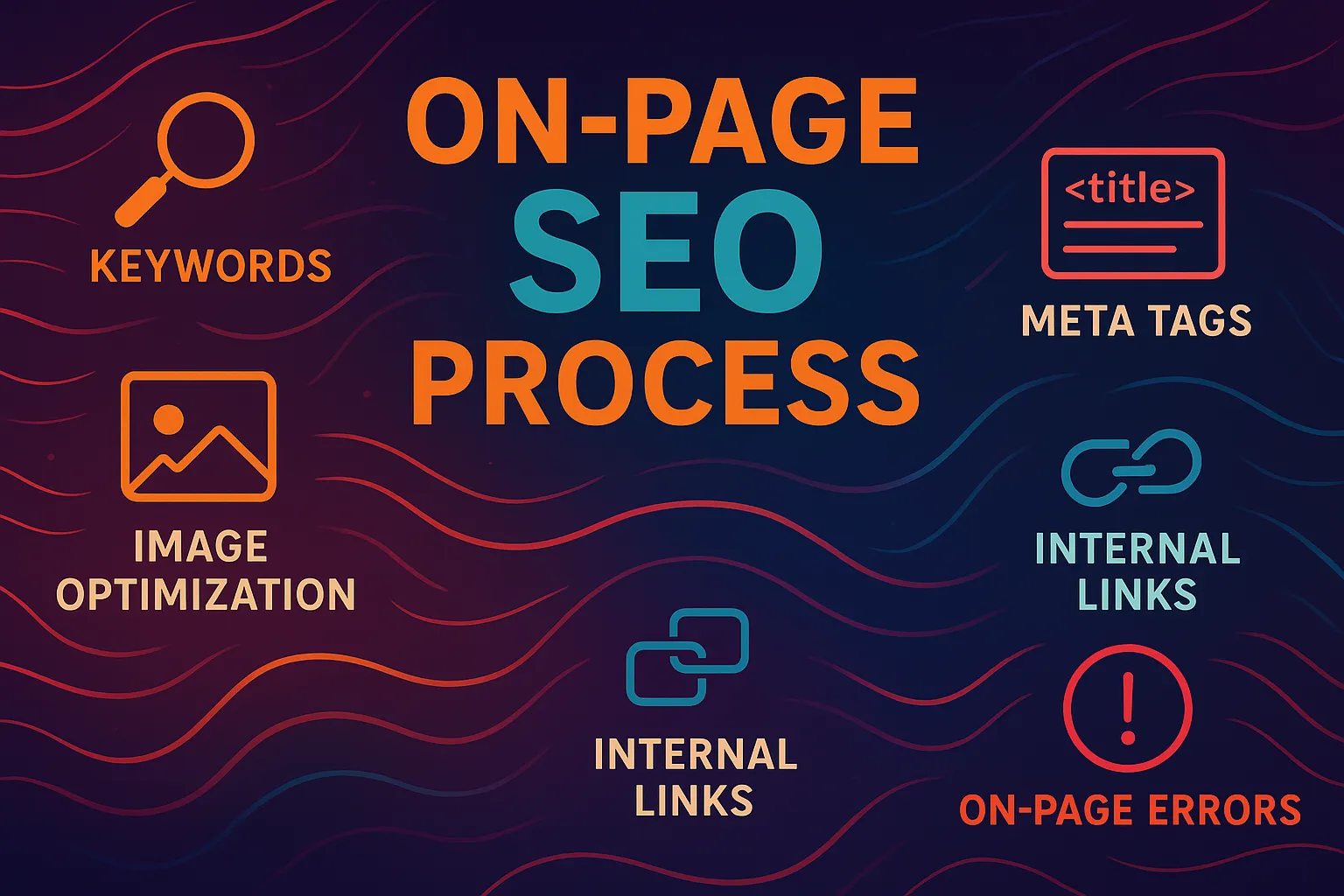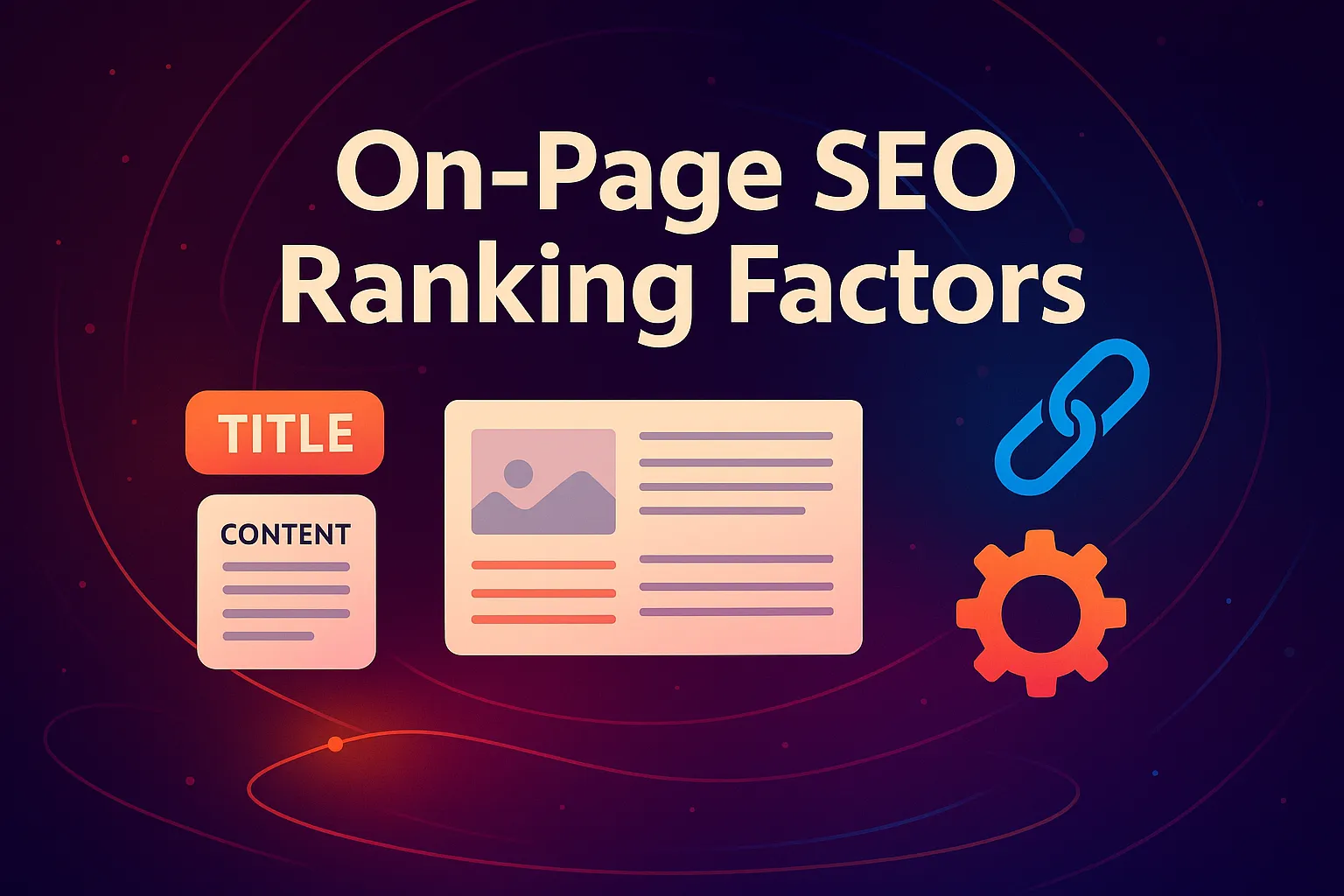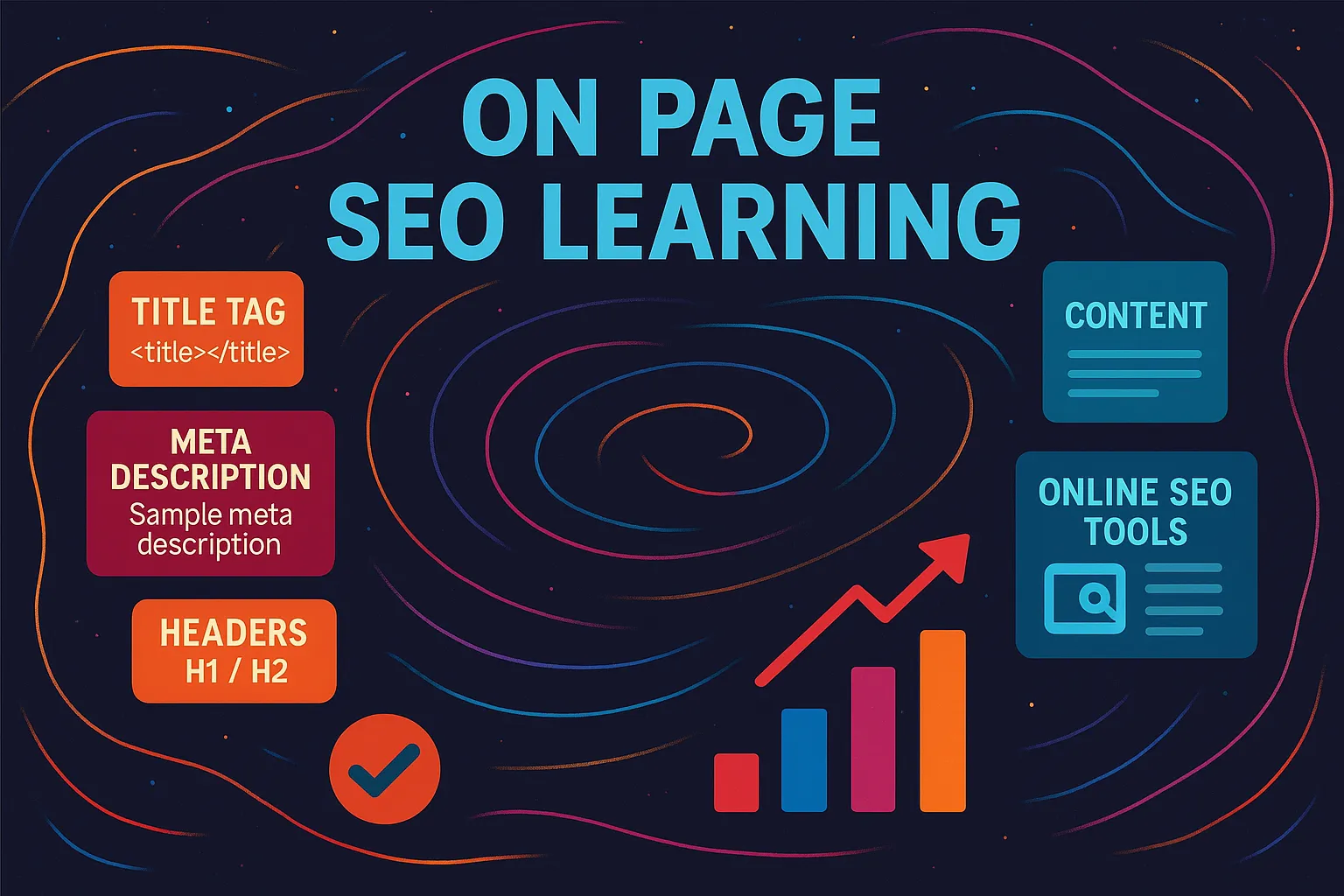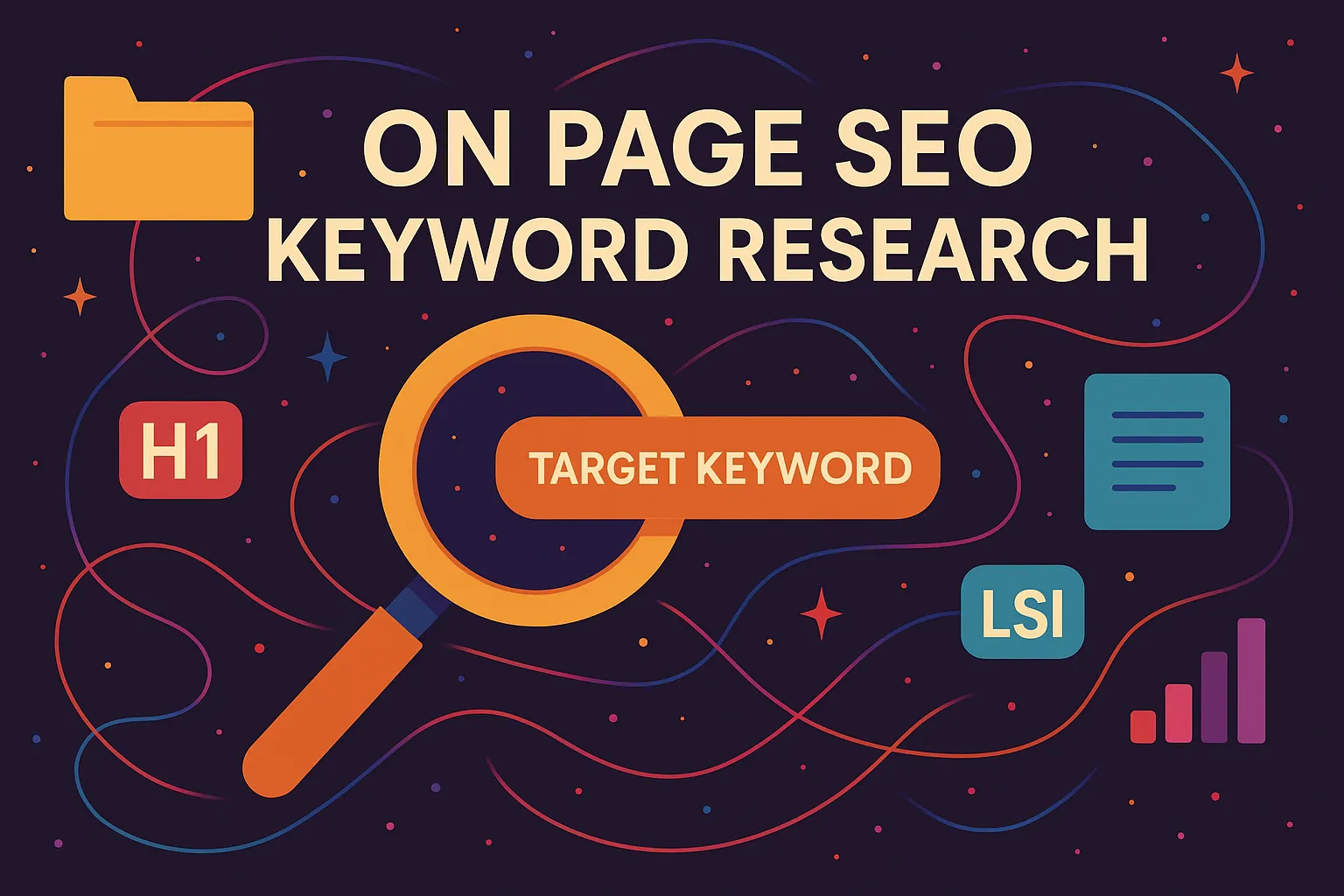What Is an “On Page SEO Tools List”?
Let me simplify this. An on page SEO tools list is a curated collection of software tools that help optimize the content and structure of your website pages.
Unlike off-page SEO, which focuses on backlinks and mentions, on-page SEO is all about what’s on your site—your content, headings, images, internal links, meta tags, and page speed. These tools are designed to make sure your pages are easily understood by search engines like Google and just as easy to love by your visitors.
At Vibe Branding, we’ve spent over a decade building up organic visibility for brands across industries. And every time we start a new SEO campaign, one of the first things we look at is: which tools will help us best optimize this site for better rankings?
That’s where this list comes in. We’ve tried and tested dozens of tools over the years, and we’re here to share the ones that actually move the needle.
TL;DR – What You’ll Learn in This Blog Post
- A full breakdown of the best tools in our go-to on page SEO tools list for 2025
- Why on-page SEO is more important than ever for rankings and traffic
- How to choose the right tools based on your needs and goals
- Free vs. paid tool comparison, including which are beginner-friendly
- Our own 10+ years of experience using these tools in client SEO campaigns
Why On-Page SEO Still Reigns Supreme in 2025
Here’s the thing: Search engines are getting smarter, but they still need help. Even with AI and machine learning powering Google’s algorithm, if your website’s structure and content aren’t optimized, you’ll get left behind.
On-page SEO is your control center. It’s where you can make changes instantly that impact how your site performs in the SERPs (search engine results pages).
Over the years, we’ve seen clients go from page five to page one simply by optimizing on-page factors—no backlinks needed. We’re talking about tweaking titles, adding headers, reworking URLs, improving internal linking, and speeding up pages.
These are things you can control, and the right tools help you do them faster, smarter, and better. If your competitors are doing it and you’re not, guess what?
You’re invisible. We’re not just saying this because it’s trendy.
Our SEO team has worked with eCommerce shops, SaaS startups, B2B companies, and even government organizations—and in every single project, on-page optimization made a measurable difference. That’s why having a strong on page SEO tools list isn’t optional anymore.
It’s essential.

What to Look for in a Great On-Page SEO Tool
So what actually makes a tool worth your time? We’ve boiled it down to five core features based on years of hands-on use across dozens of client sites.
First, a great tool should offer content optimization capabilities. It should help you understand keyword usage, readability, and relevance.
Second, you need technical analysis—things like broken links, duplicate content, and schema validation. Third, the tool must offer integration with other platforms like Google Analytics, Search Console, or WordPress.
If it works in a silo, you’ll spend more time copying and pasting than actually optimizing. Fourth, there’s ease of use.
Not every client we work with is a tech pro, so user experience matters. And finally, the best tools evolve with Google’s algorithm updates, which means frequent improvements and features that reflect what Google is currently prioritizing.
You wouldn’t believe how often we come across outdated tools that still push keyword stuffing or ignore mobile performance. That’s a red flag.
The SEO world is fast-moving—your tools need to keep up.
Best Free On-Page SEO Tools That Pack a Punch
Let’s start with the free stuff. Yes, there are great tools you can use without spending a cent—and we use them at Vibe Branding almost daily.
One of our favorite free tools is Google Search Console. It gives you direct insights into how Google sees your site.
We use it to identify pages with high impressions but low clicks. That usually means we need to fix the title tag or meta description.
Another favorite is the Detailed Chrome Extension. It gives you a quick overview of SEO elements like headers, schema, and meta tags.
It’s a lifesaver when you’re reviewing client content on the fly. We also like SEO Minion, which offers a solid breakdown of on-page elements and even highlights broken links directly in the browser.
If you’re more into content, AnswerThePublic is brilliant for keyword ideation. It visually maps user questions around a topic, which helps you structure articles to answer real queries.
And finally, SEOlyzer offers a live crawling feature, which is incredibly useful for checking how Googlebot might be interpreting your site. Here’s a quick table comparing the free tools we love:
Tool | Best For | Standout Feature |
Google Search Console | Performance Insights | Direct-from-Google data |
SEO Minion | Quick On-Page Checks | Broken link detection |
Detailed Extension | Fast Meta/Schema Reviews | Browser-native SEO snapshots |
AnswerThePublic | Content Ideation | Visual keyword mapping |
SEOlyzer | Crawling and Diagnostics | Real-time crawl monitoring |
None of these tools will do all the work for you, but together? They’re a powerhouse foundation.
Top Paid Tools from Our On Page SEO Tools List
Now if you’re ready to invest in results, these paid tools are the ones we use inside Vibe Branding’s SEO workflows. Let’s start with Surfer.
This tool is like an SEO coach living inside your browser. It helps us write optimized content in real time, score content against competitors, and even structure articles by analyzing the top-ranking pages.
Clearscope is another favorite. It’s a bit pricier, but the keyword recommendations and real-time grading system have helped us lift rankings on hundreds of blog posts.
When we onboard clients with outdated content, we run it through Clearscope and immediately see where they’re missing the mark. For technical SEO, Screaming Frog is a beast.
It crawls your site like Google would and shows you every error, redirect, or duplicate issue. It also lets us connect APIs like Google Analytics and Search Console, so we can see real user data alongside crawl insights.
That’s how we pinpoint problems before Google does. Another reliable one is Mangools.
It’s great for small businesses that want solid data without the learning curve. Their KWFinder tool is clean and fast, and the SERP checker gives great competitive insights.
And of course, Yoast SEO Premium is a staple for WordPress sites. Its structured data, readability checker, and meta tools make it easier to optimize without jumping into code.
We use most of these in tandem depending on the campaign goal—and that’s really the secret sauce.

Best Tools for Specific On-Page SEO Use Cases
Not all tools are built to do everything. Over the years, we’ve tested dozens and realized that matching the right tool to the right job is the key to saving time and boosting results.
For example, when we need to focus purely on content optimization, we reach for tools like Surfer or Clearscope. They analyze the top pages ranking for a keyword and give detailed outlines to follow.
For internal linking strategies, Link Whisper has become our go-to. It’s especially helpful on WordPress sites because it gives live suggestions based on context.
If you’re managing large blogs or content hubs, this saves hours every month. When it’s time to review and rewrite metadata, Yoast SEO steps in.
It’s clean, user-friendly, and prevents common mistakes like duplicate titles or missing alt text. It also handles schema markup like a champ, which is becoming more critical with Google’s structured data preferences.
For keyword grouping and topical authority, Keyword Insights is incredibly powerful. It clusters search terms based on SERP intent, helping us avoid keyword cannibalization and guiding pillar-page creation.
And for deep technical audits, there’s still no beating Screaming Frog. From crawl errors to duplicate content flags and custom extraction, it has everything a technical SEO would want.
How These Tools Help Improve Rankings
Here’s where everything comes together. When you use the right tools from your on page SEO tools list, you’re not just optimizing—you’re improving your rankings with purpose.
These tools help ensure that each page is targeting the right keywords, providing a strong user experience, and meeting Google’s expectations for structure and relevance. At Vibe Branding, we’ve seen tools like Surfer and Clearscope help our clients rank in the top three for competitive keywords in under 60 days.
Why? Because they guide content that answers real search intent.
Screaming Frog finds technical issues that would otherwise kill page performance. Detailed helps us see what our competitors are doing at a glance and make strategic edits.
When tools are used together—checking structure, content, speed, and links—they form a holistic SEO workflow. And that workflow delivers results that aren’t just cosmetic.
We’ve helped brands increase organic traffic by 70% in three months using these exact strategies.
Building Your On-Page SEO Workflow with These Tools
A tool is only powerful when it fits into your process. That’s why we always teach our clients to build an on-page SEO workflow.
For example, we start every new content page with keyword research using Mangools or Keyword Insights. Once we have our clusters, we move to Clearscope or Surfer to guide the content creation process.
After publishing, we’ll use Screaming Frog and SEO Minion to check internal links, crawlability, and technical structure. Once the page is live for a week or two, we monitor performance with Google Search Console and begin making iterative improvements based on impressions and click-through rate.
For long-term content maintenance, we use tools like SEOlyzer to spot decaying pages and link them with growing ones. If you’re on WordPress, Yoast makes the publishing side clean and repeatable.
Building this workflow doesn’t just save time—it multiplies your effectiveness. And it’s how we stay consistent across dozens of clients each month.
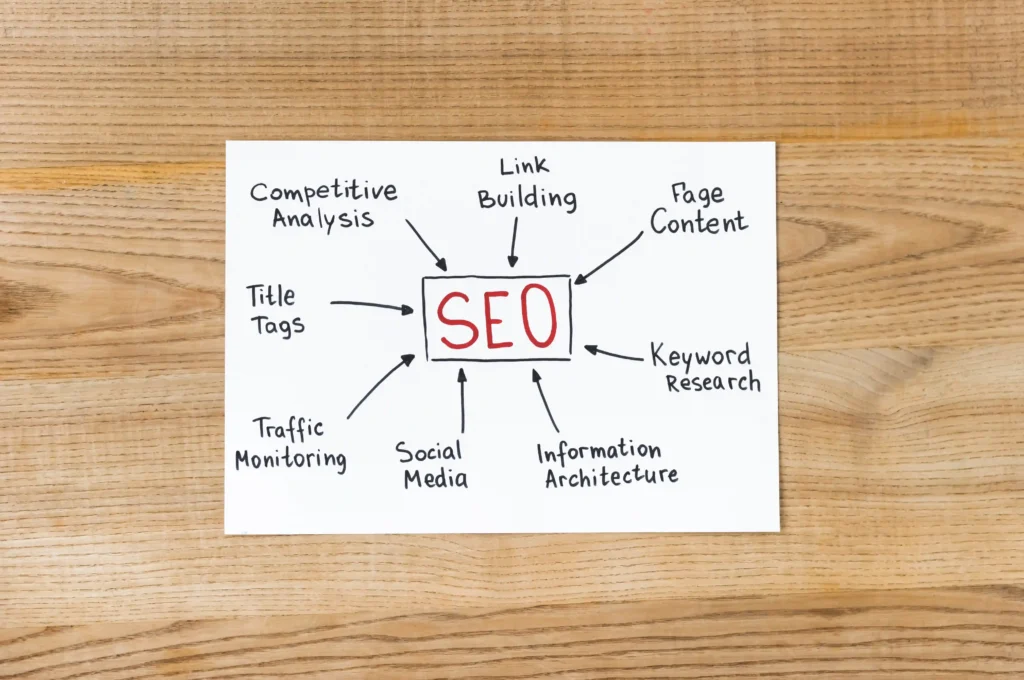
Beginner-Friendly vs. Pro-Level Tools
Let’s be honest: not everyone reading this is an SEO veteran. Some of our clients are just getting started, and others are managing 100+ page websites with full teams.
That’s why we break tools down by experience level. If you’re a beginner, tools like Yoast, SEO Minion, and AnswerThePublic are great.
They’re simple, intuitive, and still powerful. For pros and agencies, we’d recommend Clearscope, Screaming Frog, and Keyword Insights.
They have more data, deeper reporting, and better customization. That said, we believe anyone can grow into these tools.
When we started Vibe Branding, we weren’t using enterprise software. We scaled into it.
Start with what fits your comfort zone—and as your knowledge and confidence grow, upgrade to the platforms that can support bigger SEO moves.
Are These Tools Aligned with Google’s Latest Algorithm Updates?
Absolutely—and that’s one of the biggest reasons we use them. Google continues to push updates focused on quality, intent, user experience, and structured data.
All of the tools in our on page SEO tools list either adapt to these changes or were built to support them from day one. Surfer, for example, is constantly updating its SERP analysis to reflect real-time ranking shifts.
Clearscope’s natural language model is aligned with Google’s focus on semantic search. Yoast stays ahead of schema changes and core web vitals improvements.
Screaming Frog helps ensure technical readiness for every page across your domain. We make it our job to stay in the loop on every major algorithm change—and these tools make it easier to pivot, adapt, and stay competitive.
If Google says site speed matters more now? Screaming Frog has you covered.
If E-E-A-T is driving content value? Clearscope and Surfer will help you meet those guidelines.
Final Thoughts: Your Turn to Build an SEO Stack That Delivers
We’ve just walked through the most battle-tested tools in our on page SEO tools list, and if you take one thing from this article, let it be this: your tools shape your strategy. You don’t need to buy everything on this list today.
Start where you are. Pick the tools that match your goals.
Build a workflow. Iterate.
Improve. Whether you’re optimizing your first blog post or managing 1,000 product pages, these tools will save you time, keep you focused, and help you rank better.
If you’re stuck, we’re here. Reach out to Vibe Branding—we live and breathe this stuff.
And remember, in SEO, the best results come from those who work smarter, not harder. With the right tools in your hands, that’s exactly what you’ll do.

